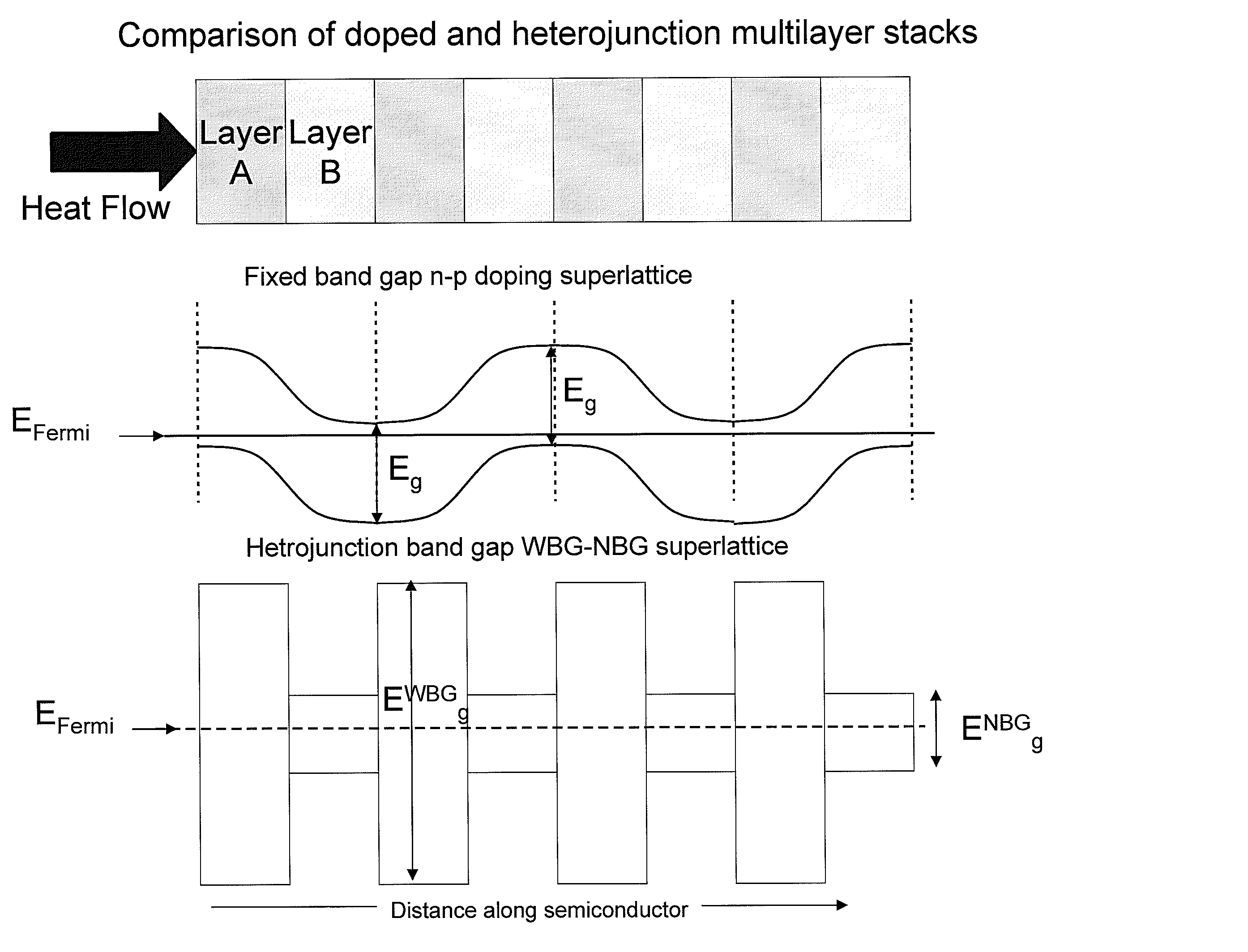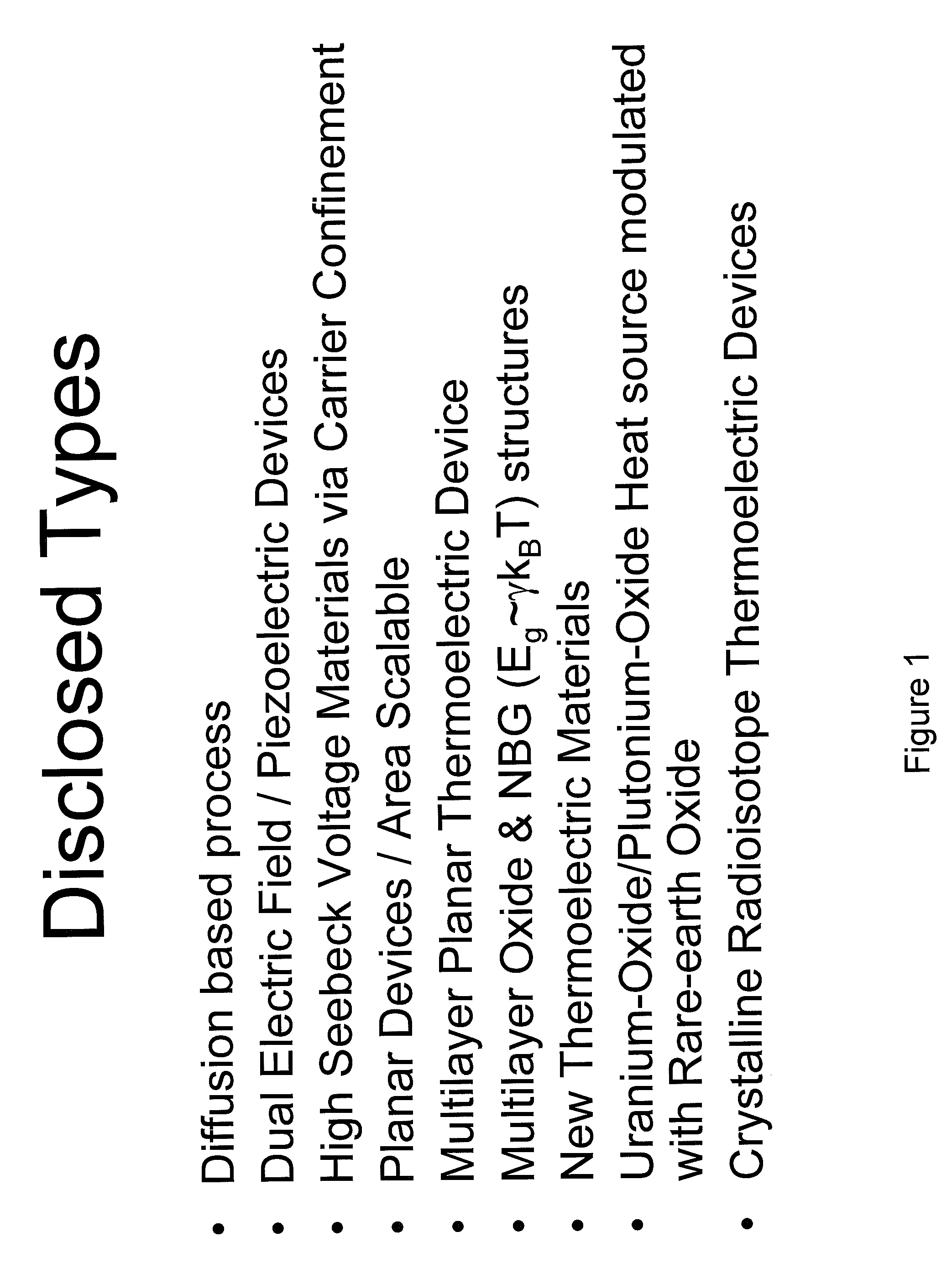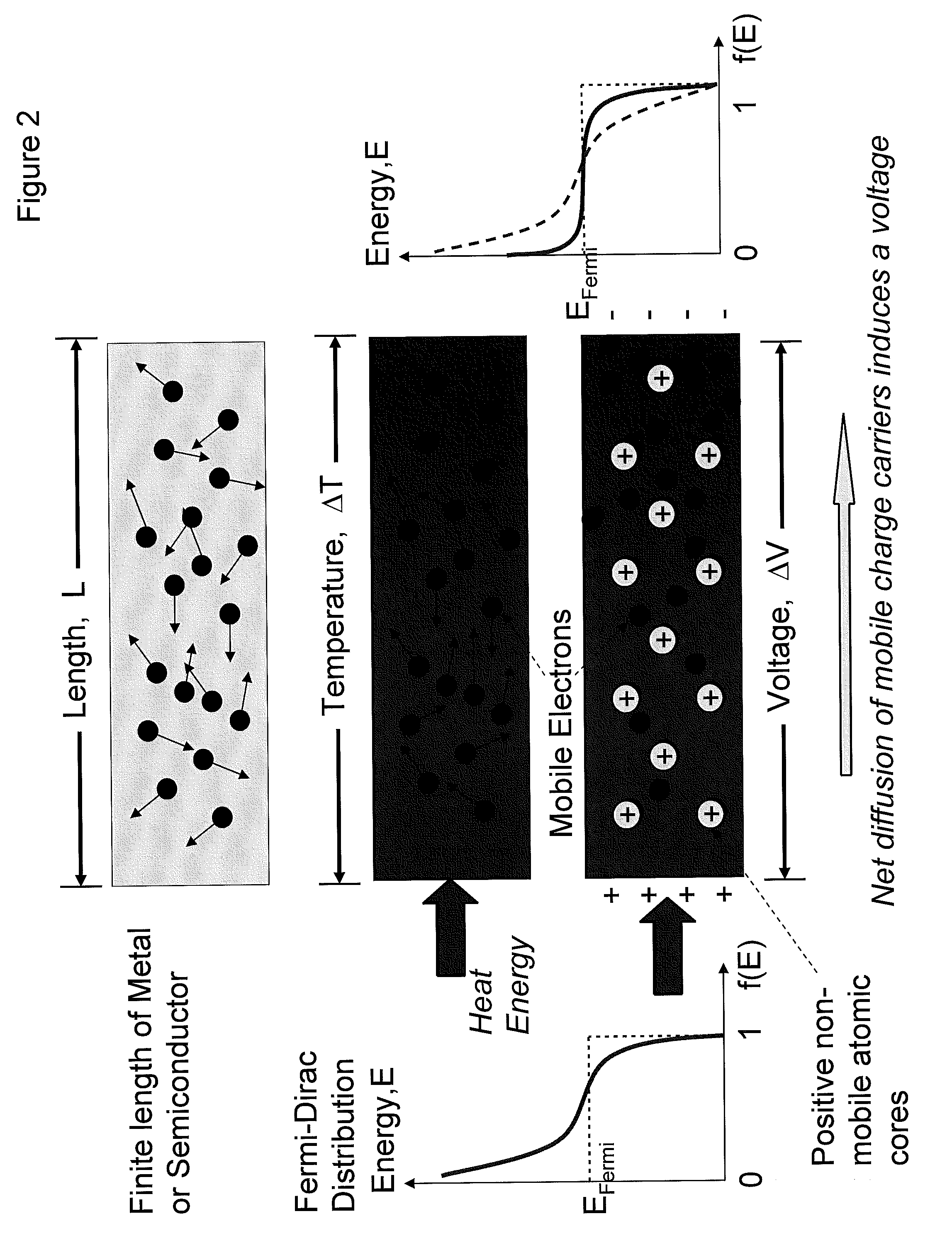Thermoelectric and pyroelectric energy conversion devices
a technology of energy conversion device and thermoelectric power, which is applied in the direction of device material selection, optical radiation measurement, instruments, etc., can solve the problems of low conversion efficiency, low conversion efficiency, and typical combustion engine development of only 25% useful shaft rotation power, so as to improve the efficiency of thermoelectric generation device and improve the effect of thermoelectric conversion efficiency
- Summary
- Abstract
- Description
- Claims
- Application Information
AI Technical Summary
Benefits of technology
Problems solved by technology
Method used
Image
Examples
Embodiment Construction
[0120]Thermoelectric materials so far used for practical applications include Bi2Te3, PbTe, and Si1-xGex. Large scale application of these materials has not occurred due to one or more problems relating to poor ZT, low melting or decomposition temperature, harmful and / or scarce elements and / or cost. Bismuth telluride Bi2Te3 has the unique properties of complex hexagonal crystal structure, small bandgap energy Eg=0.15 eV, relatively high electron and hole mobilities (μe=800 cm2 / Vs &μh=400 cm2 / Vs) and low thermal conductivity (κth˜1-2 W / mK). N-type BiSb is superior at low temperatures, but does not have a p-type counterpart. Bi2Te3 exhibits the highest performance near room temperature, and is used for cooling applications such as commercially available Peltier coolers. PbTe shows the highest performance near 500-600° K., and Si1-xGex is superior above 1000° K. The compound semiconductors BiSb, PbTe and Si1-xGex all have a zinc-blende type crystal structure. It is noteworthy that sing...
PUM
| Property | Measurement | Unit |
|---|---|---|
| channel length | aaaaa | aaaaa |
| carrier density | aaaaa | aaaaa |
| melting point | aaaaa | aaaaa |
Abstract
Description
Claims
Application Information
 Login to View More
Login to View More - R&D
- Intellectual Property
- Life Sciences
- Materials
- Tech Scout
- Unparalleled Data Quality
- Higher Quality Content
- 60% Fewer Hallucinations
Browse by: Latest US Patents, China's latest patents, Technical Efficacy Thesaurus, Application Domain, Technology Topic, Popular Technical Reports.
© 2025 PatSnap. All rights reserved.Legal|Privacy policy|Modern Slavery Act Transparency Statement|Sitemap|About US| Contact US: help@patsnap.com



